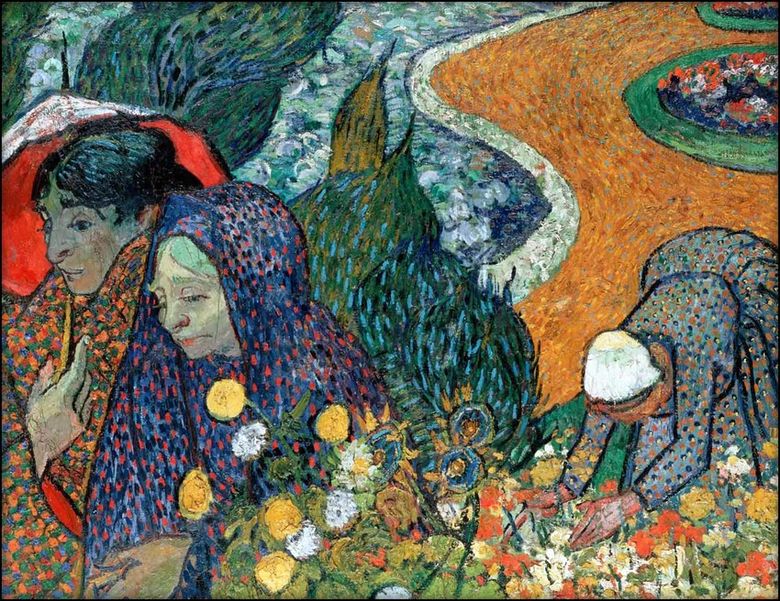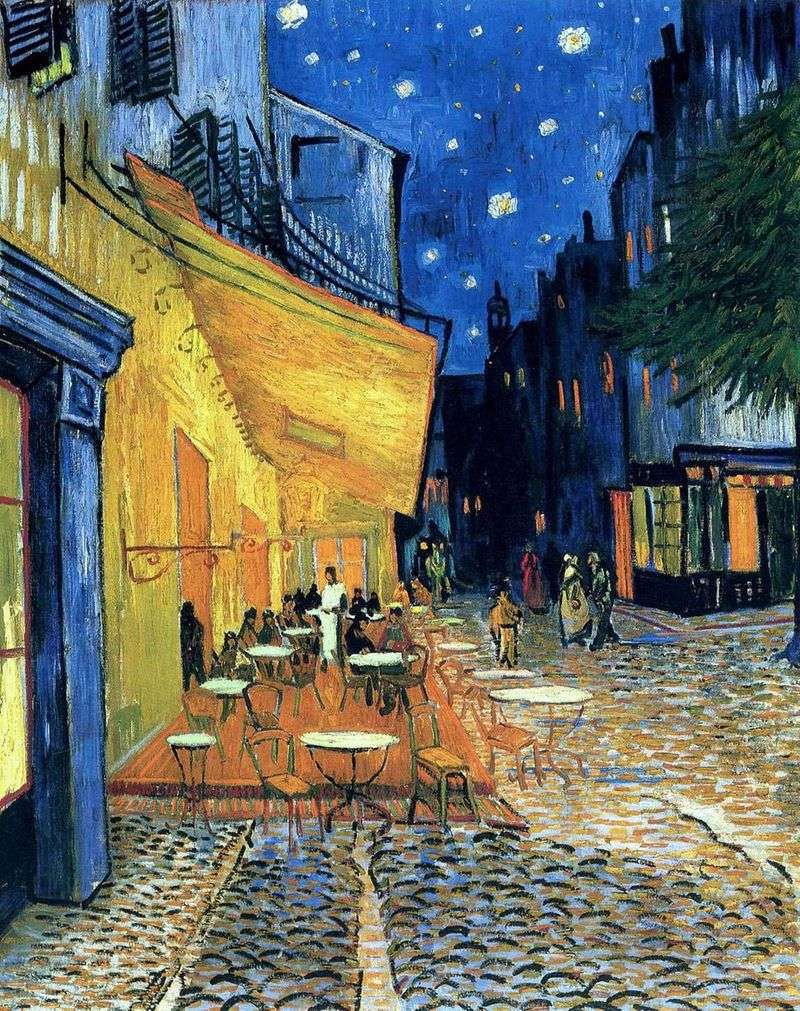
Vincent van Gogh is a representative of the post-impressionism trend in painting. During his lifetime, he was not recognized, in fact he was begging, and today his canvases are the pride of any museum and good luck for the auction house.
The second name of the picture refers to the village of Etten in Holland, where Van Gogh’s parents lived. Thus, on the canvas appears a Dutch peasant woman caring for flowers, and a cabbage field in the background. The bright color and red shadow on the umbrella are associated with the dazzling light of Provence.
The canvas is not written from nature, but from imagination. Everything in it is planar – both figures and landscape. The space unfolds not in depth, it goes parallel to the plane of the canvas by separate zones – a method that Van Gogh borrowed from Japanese artists. Within the “zone” are saturated with rapid tangible strokes, creating an internal dynamism of forms.
“Arles ladies” – a product that is ambiguous, very complex. Despite the vivid coloring of colors, the picture causes the viewer an involuntary sense of anxiety, aggravated by the sad faces of women going. The work was written during the last eight years of the artist’s life, when the world around him brought him only suffering.
 Arles Ladies – Vincent Van Gogh
Arles Ladies – Vincent Van Gogh Red vineyards in Arles by Vincent Van Gogh
Red vineyards in Arles by Vincent Van Gogh View of Arles with irises in the foreground by Vincent Van Gogh
View of Arles with irises in the foreground by Vincent Van Gogh Terrace cafe in the Forum Square in Arles, at night by Vincent Van Gogh
Terrace cafe in the Forum Square in Arles, at night by Vincent Van Gogh Flowering almond branches by Vincent Van Gogh
Flowering almond branches by Vincent Van Gogh Peach tree in bloom by Vincent Van Gogh
Peach tree in bloom by Vincent Van Gogh Boats with sand at the pier by Vincent Van Gogh
Boats with sand at the pier by Vincent Van Gogh Walking in Arles by Vincent Van Gogh
Walking in Arles by Vincent Van Gogh